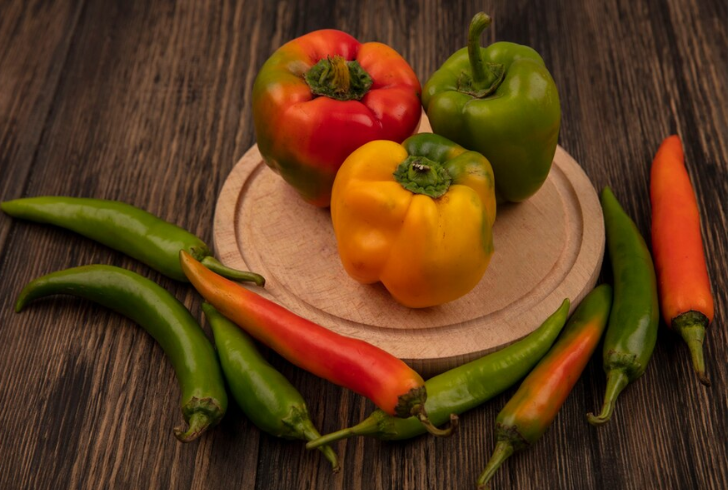Many people find the thrill of spicy food irresistible. From the initial zing to the sweat-inducing heat, there’s something about the bite of a hot pepper that keeps people coming back for more. But what are the benefits of spicy food, and is it safe to eat on a regular basis? Whether you're a spice enthusiast or someone who dreads the burn, understanding the effects of spicy foods on the body may surprise you.
Here, we'll explore what makes food spicy, how it affects the body, the pros and cons of adding spice to your diet, and some helpful ways to cool down if things get too hot.
What Makes Food Spicy?
The primary agent behind the fiery sensation of spicy food is capsaicin, a naturally occurring compound in chili peppers such as jalapeños, cayenne, and habaneros. Capsaicin interacts with receptors in the mouth and digestive system, creating the "heat" that’s often mistaken for a flavor. According to Dr. Rabia de Latour, a gastroenterologist, capsaicin binds to specific receptors, giving rise to the familiar burning sensation.

Freepik | stockking | Capsaicin, found in chili peppers, causes the fiery sensation in spicy food.
The heat level of a pepper depends on the type and concentration of capsaicin it contains, measured on the Scoville Heat Unit (SHU) scale. For instance, a common jalapeño pepper typically registers around 5,000 SHU. In contrast, the Carolina Reaper, renowned as one of the world's hottest peppers, can soar to over 1.5 million SHU.
How Does Spicy Food Affect Your Body?
When you consume spicy food, capsaicin binds to receptors called TRPV1 located in the mouth and on the tongue. These receptors signal the brain with sensations of pain and heat, making the body believe it’s experiencing actual heat.
As a result:
1. The heart rate may increase slightly.
2. The body may sweat or flush to cool down.
3. The nasal passages might release fluid, causing a runny nose or watery eyes.
Once capsaicin reaches the digestive tract, it may lead to further reactions. In the gut, it can increase motility, sometimes leading to a faster digestive process or even diarrhea in some people. Dr. de Latour explains, “Capsaicin triggers a faster transit in some individuals, which can lead to discomfort.” Furthermore, when capsaicin exits the body, it can cause a burning sensation, a familiar phenomenon for spicy food lovers.
Understanding Spice Tolerance
Spice tolerance isn’t universal. It can depend on a combination of genetics, exposure, and personality. The TRPV1 receptors vary in number and sensitivity, leading to differences in how heat is perceived. Some people simply have fewer receptors, allowing them to handle spiciness more easily.
Frequent exposure to spicy food may also increase tolerance. Those who regularly consume spicy foods, especially in cultures where spices are a staple, tend to build up a higher tolerance. Interestingly, people with thrill-seeking personalities may even associate the burn of spicy food with pleasure, further fueling their love for fiery flavors.
Potential Benefits of Spicy Food
Many cultures have incorporated spicy foods into their cuisines for centuries, and recent research has hinted at several potential benefits of spicy food. While more studies are needed, some evidence suggests that capsaicin offers several health advantages, including:
1. Longevity
Spicy food could be associated with a longer lifespan. A large-scale study in China found that individuals who consumed spicy food almost daily had a lower risk of mortality compared to those who rarely ate it.
2. Heart Health
Capsaicin’s anti-inflammatory properties may benefit the heart. A study by the American Heart Association indicated that regular chili pepper eaters had a reduced risk of death from heart disease and cancer.
3. Enhanced Metabolism
Capsaicin is believed to have a mild thermogenic effect, which could help slightly boost metabolic rate. This could assist those with slower digestion.
4. Gut Health
In moderate amounts, spicy food may promote gut health. However, if you have digestive issues like IBS, it’s wise to approach spicy foods with caution.
Risks Associated With Spicy Foods

Instagram | dr.shanttomassian | Individuals with sensitive stomachs may experience discomfort from high capsaicin consumption.
While most people can enjoy spicy food without any major issues, there are potential drawbacks to be aware of, especially if you tend to go overboard:
1. Digestive Distress - Consuming high levels of capsaicin can cause heartburn, acid reflux, and gastrointestinal discomfort, particularly for individuals with sensitive stomachs or pre-existing conditions like irritable bowel syndrome (IBS).
2. Irritation to Existing Conditions - For people with certain conditions, such as anal fissures, the spicy sensation may worsen symptoms.
3. Accidental Inhalation - If capsaicin particles are accidentally inhaled, it may irritate the respiratory system and, in rare cases, exacerbate asthma.
Generally, spicy food is safe, but individuals with underlying health concerns should monitor their intake.
Can Spicy Food Be Dangerous?
In most cases, spicy food isn’t dangerous. However, the trend of consuming extremely hot peppers has led to rare instances of severe discomfort and even hospitalization. Challenges involving extremely spicy foods can expose people to potentially hazardous levels of capsaicin, so it’s best to enjoy spicy food in moderation.
Tips for Cooling Down After Spicy Foods
If you’re feeling the burn, avoid drinking water, as it can spread the capsaicin. Instead, foods high in protein or fat can provide relief. Here are a few go-to options to reduce the heat:
1. Milk - Dairy contains casein, which can help neutralize capsaicin.
2. Yogurt - The fats in yogurt act as a buffer and can cool the mouth.
3. Ice Cream - Offers relief while adding a touch of sweetness.
4. Avocado - Its creamy texture can provide a soothing effect.
While there are promising benefits of spicy food, it’s all about balance and understanding personal tolerance. If spicy food enhances your meal experience, it can be a delightful addition to a healthy diet when enjoyed in moderation.



